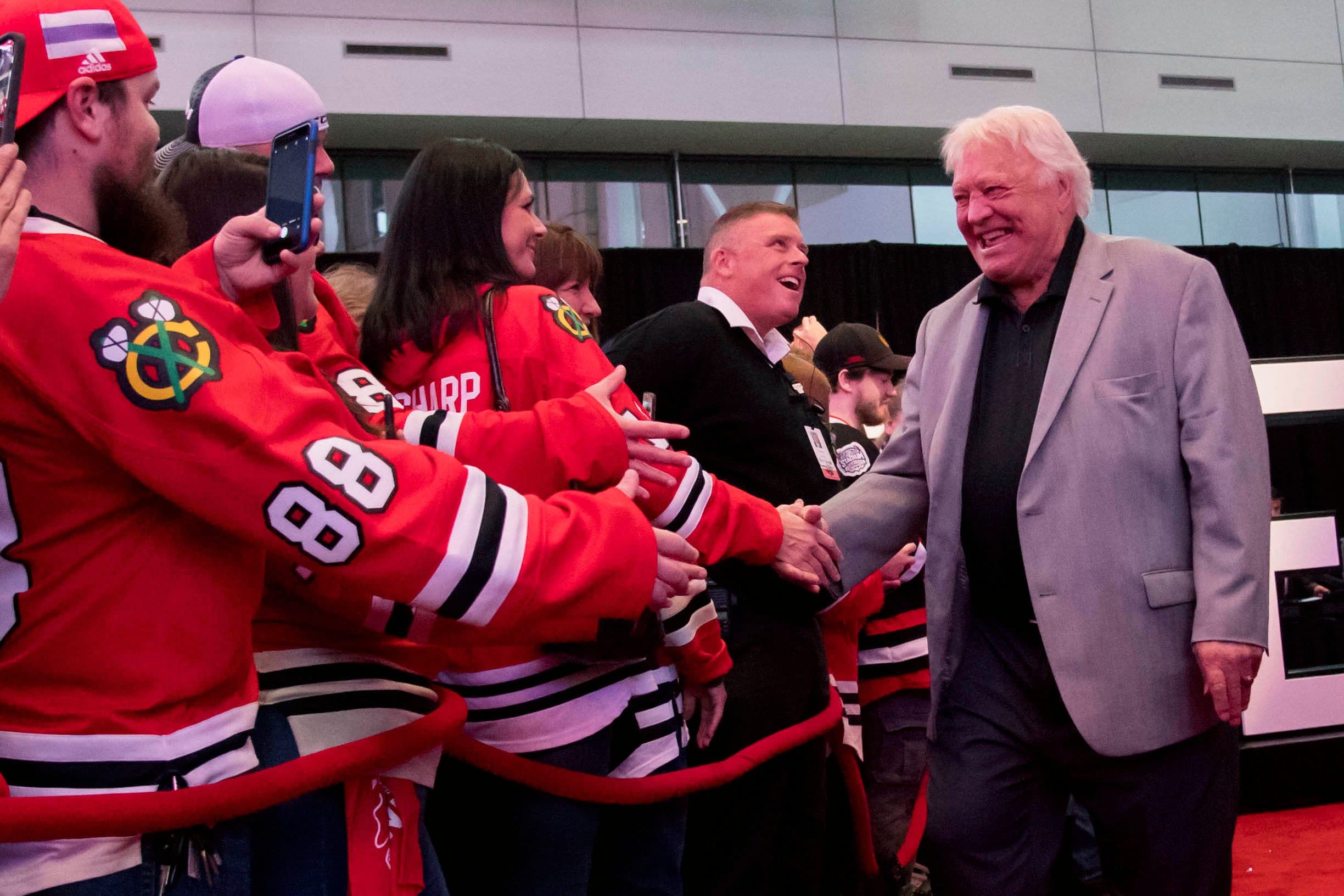Two-time Hart Trophy winner Bobby Hull posthumously diagnosed with CTE

BOSTON — Hockey Hall of Famer and two-time Hart Trophy winner Bobby Hull was posthumously diagnosed with chronic traumatic encephalopathy (CTE), marking the most prominent former NHL player afflicted by the debilitating brain disease caused only by repeated blows to the head.
The findings of Hull’s diagnosis were announced on Wednesday by the Concussion Legacy Foundation in conjunction with Hull’s widow more than two years after he passed at the age of 84 and quietly donated his brain to science.
“Seeing the pain and heartache suffered by his lifetime friend Stan Mikita’s family, Bobby felt strongly no other family should have to endure CTE,” Hull’s wife of 39 years, Deborah Hull, told the CLF. “He insisted on donating his brain, feeling as though it was his duty to help advance research on this agonizing disease.”
Hull was diagnosed with Stage 2 CTE; the disease has four stages. Deborah Hull reported to the CLF that Hull “struggled with many of the cognitive symptoms of CTE, such as short-term memory loss and impaired judgment” over the last 10 years of his life.
Hull’s family donated his brain to the UNITE Brain Bank at Boston University’s CTE Center. So far, 18 of the 19 deceased former NHL players to donate their brains have been confirmed to have CTE. While there have certainly been some big name NHL players, including Mikita, Bob Probert and Derek Boogaard – none has the resume of Hull.
Nicknamed “The Golden Jet,” Hull led the NHL in goal scoring seven times, captured three Art Ross trophies as the league’s leading point getter and finished in the top three in Hart Trophy voting an incredible eight seasons – inclusive of his two MVP seasons. In 1972, he became the first professional hockey player to earn a million dollar payday, which was as unbelievable as it was unprecedented, when he jumped from the NHL to the WHA with the upstart Winnipeg Jets.
When factoring in his WHA accomplishments, only two players in pro hockey history have scored more than Hull’s 1,018 goals – narrowly surpassed by Wayne Gretzky and Gordie Howe – when including both regular season and playoffs.
In all, Hull played 23 professional seasons and 1,474 regular season games over the two leagues. The vast majority of those games were played without a helmet. Interestingly, Hull was photographed wearing a helmet with a football-style facemask long before they were required. He also occasionally wore a helmet while playing in the WHA. Helmets were not made mandatory by the NHL until 1979 and all players who played before then were grandfathered in; Hull retired after the 1979-80 season.
To date, the NHL and commissioner Gary Bettman have refused to acknowledge the link between hockey and repetitive blows to the head and CTE. They are one of the last professional sports leagues to not acknowledge CTE, citing more research required. A study by BU found that the odds of developing CTE increased by 34 percent for each year of professional hockey played.
“NHL families deserve to know that CTE can be a consequence of the head impacts they receive while playing the game,” CLF CEO Chris Nowinski said in a release. “The NHL still shamelessly refuses to acknowledge this scientific truth, so we hope this message reaches current players so that they, at a minimum, can play with informed consent.”
To that end, NHLPA executive director Marty Walsh became the first person with power at hockey’s highest level to not only acknowledge CTE, but take a step forward in learning more about it to combat it. In November, Walsh announced the formation of the union’s first-ever CTE Advisory Committee, which is initially comprised of 10 players but has plans to expand to a representative from all 32 teams.
The NHLPA voted unanimously to form the committee. Walsh said he learned during the NHLPA’s executive search when selected for his role how important learning more about CTE was to current players – where he also heard how important it was to get back to international best-on-best play.
“I knew there was something we had to do,” Walsh told Daily Faceoff in November. “I think it’s important for us to really do research of our own, to create an opportunity for players to understand the full impact of CTE. You have to understand the importance and the benefits of playing professional hockey, but you also have to look at the other side of the coin – the impact it has on players’ physical well-being and their head.”
Director of BU’s CTE Center, Dr. Ann McKee, encouraged retired players and their families to contact the CLF for help and care if CTE is suspected, particularly on how to effectively treatment symptoms, “especially in mid-life.”
Hull was a larger-than-life persona with a booming shot and signature raspy voice, who also had a checkered history off the ice. He was arrested in 1986 for assault and battery after police told the Associated Press that there was evidence he struck his wife Deborah in the face, and his previous marriage had ended in divorce after several allegedly abusive incidents. He died on Jan. 30, 2023 at the age of 84.
_____
Recently by Frank Seravalli
- Sources: NHL, NHLPA grant Team Canada emergency roster exception in standby Thomas Harley
- Playing Hockey’s Doctor Love: 2025 Trade Deadline Matchmaker
- Mike Eruzione: ‘This is the best collection of American talent ever put on the ice’ at 4 Nations Face-Off
- Islanders’ Kyle Palmieri a potential low-risk, high-reward trade addition for a contender
- Casey Mittelstadt, Seth Jones join latest Trade Targets board